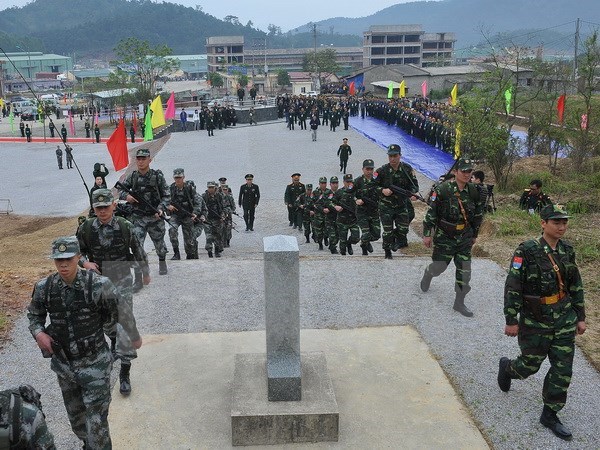Vietnam and China have had mixed results in implementing three bilateral legal documents on the land border over the last five years, a Vietnamese official has said.

Vietnamese and Chinese border guards conduct a joint patrol along the shared border.
Nguyen Anh Dung, deputy head of the Foreign Ministry’s National Border Committee, spoke to the Vietnam News Agency about the issue on the sidelines of a meeting in China’s Nanning city on May 24. The event reviewed the five-year implementation of the protocol on border demarcation and marker planting, the agreement on border management regulations, and the agreement on border gates and land border gate management regulations.
Those documents were signed by the Vietnamese and Chinese Governments on November 18, 2009.
They formed a legal foundation for protecting territorial sovereignty and boosting cooperation between Vietnam and China, Dung said, noting that the documents have been implemented quite smoothly in the last five years.
Under the documents, cooperation mechanisms have been used to help manage the border and markers, guarantee security, and facilitate cross-border socio-economic, cultural and tourism activities.
He also acknowledged problems during the enforcement of the three documents, particularly some unclear points in the protocol on border demarcation and marker planting.
The two sides have also not disseminated the documents well enough, Dung said, stressing that better communication will help Vietnamese and Chinese people, especially border residents, adhere to the documents.
Dung also highlighted the need to improve the management of entry and exit from each country as there are more and more people crossing the Vietnam – China border.
Cross-border crime such as smuggling, and drug and human trafficking is still an issue. Both sides must increase efforts and cooperation to address crime, he added.
Vietnam and China have a total border length of almost 1,450 km, including 1,065.6 km on land and 383.9 km on water. The borderline traverses seven Vietnamese provinces (Dien Bien, Lai Chau, Lao Cai, Ha Giang, Cao Bang, Lang Son, and Quang Ninh) and China’s Yunnan province and Guangxi Zhuang Autonomous Region.
VNA